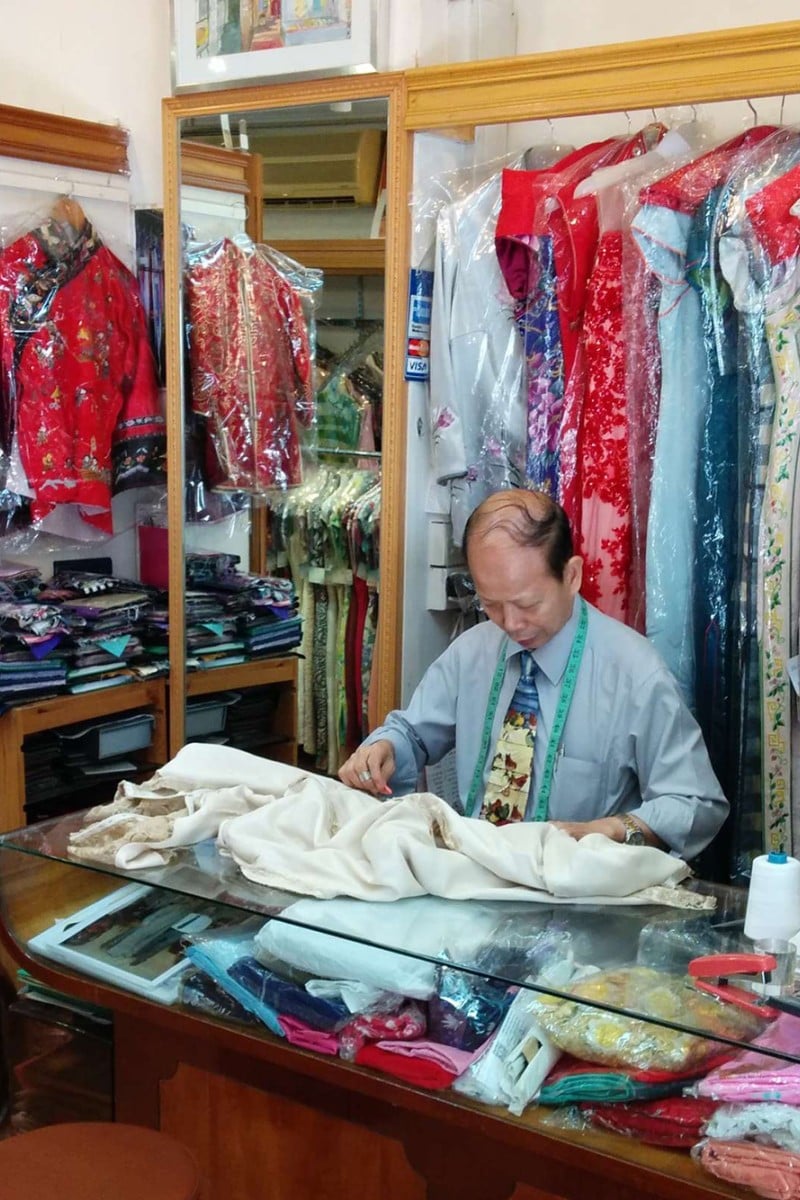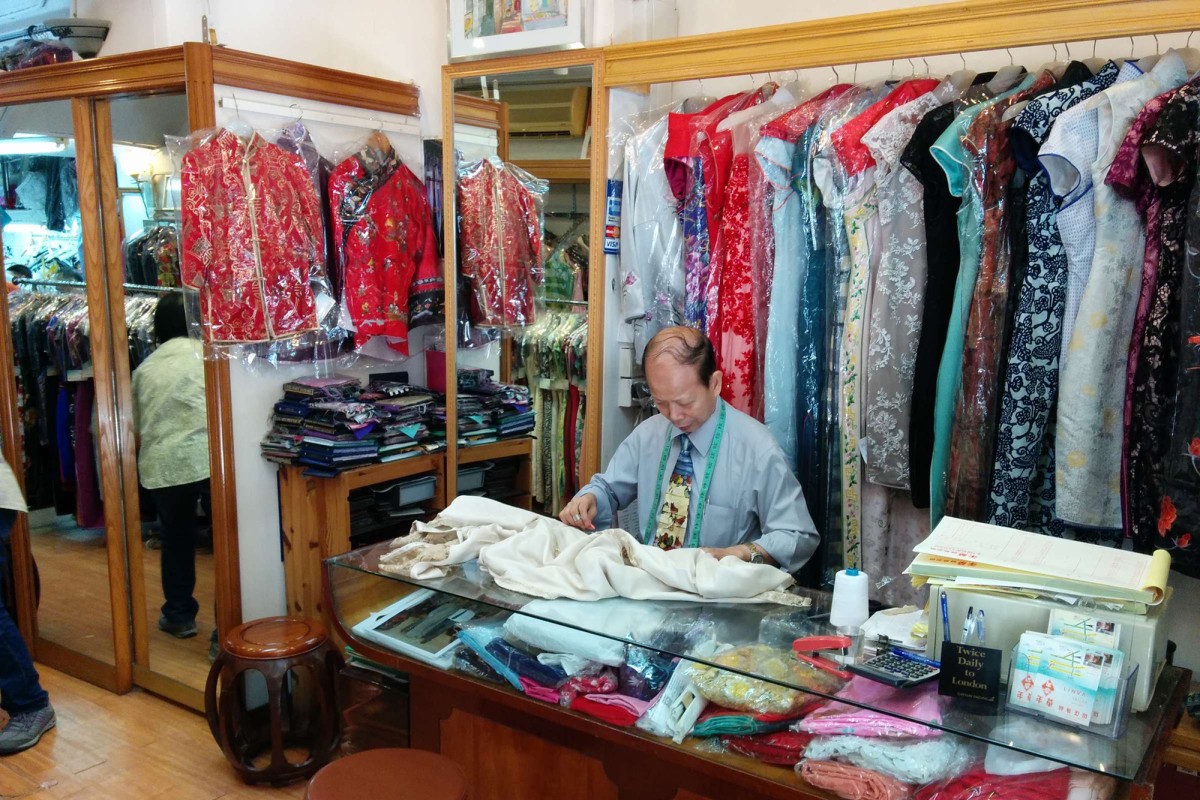
Suzie Wong, Su Li-zhen and Chun-li all famously wore cheongsam. But the iconic modern dress, a Chinese fashion staple that’s been around since the 1920s, has also kept one shop in business for decades

 Leung Ching-wah has been a tailor on Cochrane Street for 51 years, and has no plans to go anywhere.
Leung Ching-wah has been a tailor on Cochrane Street for 51 years, and has no plans to go anywhere.Most of us at the age of 14 can barely get to school on time in the morning without the help of our parents; but by that age Leung Ching-wah and his wife Leung Fung Pui-chun were both already striking out on their own.
The founders of Linva Tailor, one of Hong Kong’s most famous suppliers of traditional Chinese cheongsam (full disclosure: they’re my grandparents) first opened for business in 1965 at 38 Cochrane Street in Central. Fifty-one years later, they can still be found there.
Unlike the fabric of the cheongsam that they make, the road travelled by the founders has not been silky smooth for either of them. Ching-wah has worked in the tailoring industry since the 1960s.
“I’ve done just about everything! When I was an apprentice I would cook meals for the tailors, and I’ve managed to work my way up to making dresses for celebrities in award-winning movies.”
Pui-chun found her footing in the industry simply because she liked to dress up and was interested in fashion.
When asked about her journey, Pui-chun laughs and says that she has had her struggles.
“I couldn’t afford to continue my education after primary school as the fees were too expensive, so I went straight into work.” Under pressure to earn enough money to keep herself afloat at the age of 14, Pui-chun jumped from job to job. It was especially tough for her when she arrived from Macau.
“I was the only girl out of 30 staff, and I couldn’t speak Hakka [which the others spoke].”
After months of not being able to join in on the conversations around her, she began to pick up the language – though she adds that she would have been better off not bothering. Most of the conversations around her were made up of insults, and the first phrase Pui-chun latched onto and could say was “what did you just dare say to me?!”. The comments that had been thrown her way subsided after that.
Though she eventually picked up the language, she chose to pour her soul into her work, picking up extra shifts to earn more. Experiences like that, she says, didn’t put her off tailoring – they fuelled her dedication to what she did.
She explains that when they initially opened Linva, she often had to work through the night on commissions to complete the work on time. As the years progressed, Linva became more than just a way for her to make money – and Pui-chun says she has no desire to retire just yet.
Ching-wah has also had his fair share of struggles. In the 1960s, the fashion industry was very competitive, and sometimes they would fall prey to false promises or fake customers.
He explains that one of his first calls purportedly came from a famous individual who asked his team to take some orders.
“We were young and new, so we were very excited about it,” he said, because they had been specifically requested. However, upon arrival at the address they had been given, there was no customer to be found – it was a construction site. These bumps in the road have not, however, caused the business to falter by much – Linva has, for example, made dresses for Wong Kar-wai’s famous Hong Kong film In The Mood For Love (2000).
Pui-chun says that the business has been “challenging to maintain”: the industry has changed; demand for the cheongsam has been on the decrease since well before the 1980s, and there are less sifus – masters – around who know the craft inside and out. The ones who are still around are getting older but can’t pass on their knowledge as they don’t have any apprentices.
“They’re so skilled that they don’t need to measure their folds and stitches,” Pui-chun says. Cheongsam also all used to be tailor-made according to the customer’s wishes and needs, but people now want something more instantaneous. Tourists and businesswomen who may only be in the city for a brief while don’t have time to have their garments tailor-made in the same way that they used to.
“What used to take months to delicately tailor can now be produced by factories,” Pui-chun says, but adds that the quality can’t be compared to what a skilled tailor can produce.
Despite all of this though, Ching-wah and Pui-chun still have their own sifu to help them get their made-to-measure dresses out as requested, from the perfectly fitting mandarin collars down to the smallest frog fasteners. Their journey hasn’t been smooth, they agree, but that hasn’t stopped them from making their figure-hugging mark on the industry anyway.
Edited by Ginny Wong
